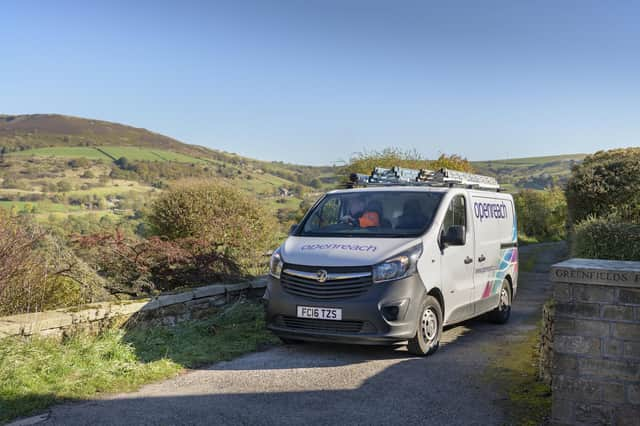Enabling better connectivity for Scotland - comment


For many, there was a period when work, socialising, education and shopping migrated almost entirely online. As we cautiously return to cafes, workplaces, pubs and restaurants, Saturday night video call quizzes and family reunions in segments of a screen are still fresh in our collective memories.
Now feels like a good time to reflect on the often-unseen infrastructure that kept things going. Today, 94 per cent of Scottish households and firms can connect to superfast broadband, and half can access ultrafast services – although many may still be unaware that they can switch to a better service.
Advertisement
Hide AdAdvertisement
Hide AdHundreds of thousands of Scottish households and businesses, mainly in urban areas, already have access to gigabit-capable, ultra-reliable full fibre. Openreach has just outlined a major commitment to connect homes and businesses in the “final third” of the UK, making full fibre broadband available in some of the hardest-to-reach locations.
Sixty small towns, villages and rural areas across Scotland – such as Aviemore, Campbeltown, Cumnock, Dunbar, Kilsyth, Peebles and Thurso – will benefit. However, there are still huge challenges ahead.
Since lockdown, we’ve seen record demand on our Scottish digital network, with internet traffic up by 70 per cent. It has held up well. But we now need to focus on the challenges of longer-term economic recovery.
Public spending will need to support this and redirect investment to areas that will provide a high return: digital education, health, cybersecurity and environment. Digitalisation of small firms and key industries – such as transport, agriculture and tourism – should be a priority. We’re already seeing significant new demand for digital business services.
Investors – from the public or private sector – must continue to build digital infrastructure, where work can be carried out safely. It’s crucial to helping Scotland bounce back economically. Two important reports have stressed that digital connectivity should be a priority.
The Scottish Infrastructure Commission’s final report, released today, recommends that Scotland should aim for a full fibre network by 2027. The UK Government has outlined a £5 billion plan to deliver gigabit-capable broadband across the UK by 2025. If this is to be achieved, we need to tackle the barriers that hold back installation.
The industry needs better and faster planning, access, consents and roadworks rules. While many of these suggested interventions might feel granular and distant from the fast-changing realities of our day-to-day digital lives, they are key to support and improve the vital connections that will underpin our changed ways of working and living.
Robert Thorburn is partnership director of Openreach in Scotland
A message from the Editor:
Advertisement
Hide AdAdvertisement
Hide AdThank you for reading this story on our website. While I have your attention, I also have an important request to make of you.
The dramatic events of 2020 are having a major impact on many of our advertisers - and consequently the revenue we receive. We are now more reliant than ever on you taking out a digital subscription to support our journalism.
Subscribe to scotsman.com and enjoy unlimited access to Scottish news and information online and on our app. Visit https://www.scotsman.com/subscriptions now to sign up. By supporting us, we are able to support you in providing trusted, fact-checked content for this website.
Joy Yates
Editorial Director
Comments
Want to join the conversation? Please or to comment on this article.